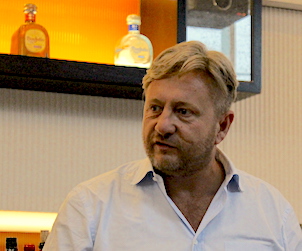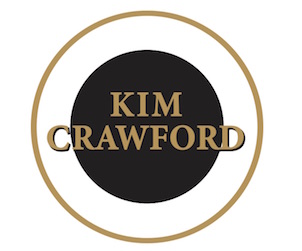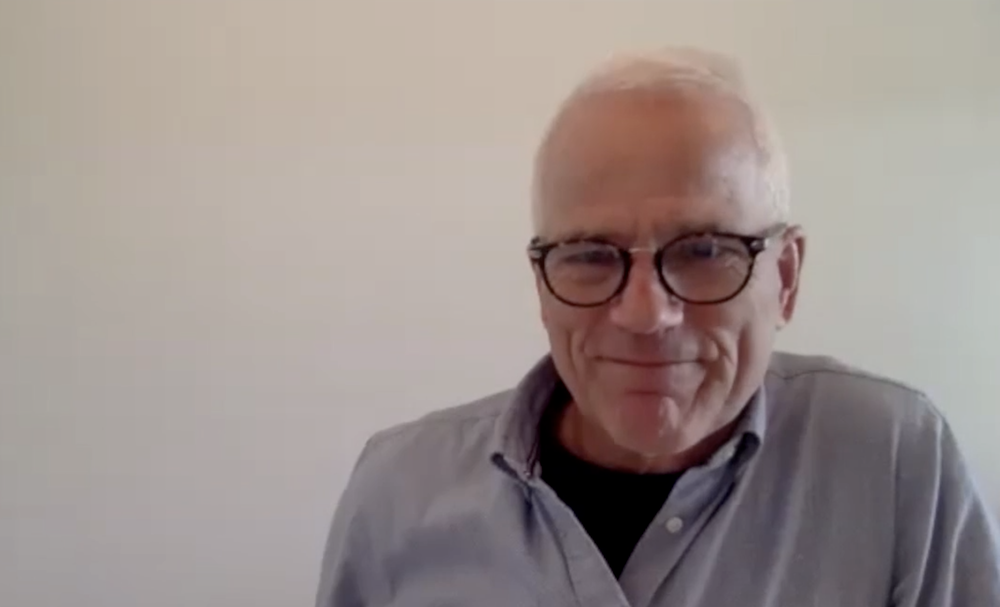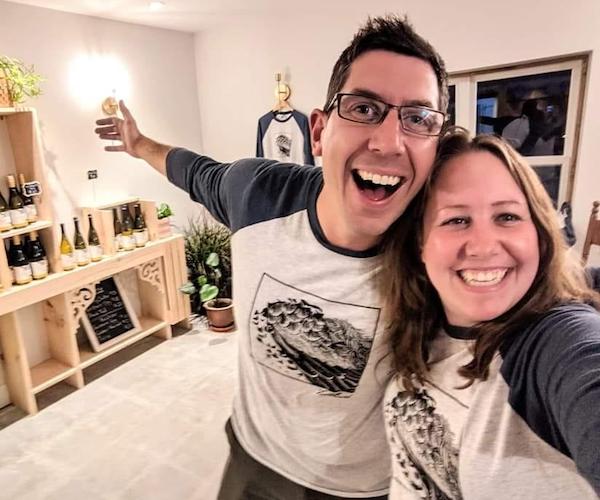Malcolm Jolley has lunch with the legendary winemaker and a few of his wines.

The indomitable Marc Kent was in Toronto for a brief stay this week: all part of a whirlwind tour of Canada that took him away from his South African vineyards just before harvest. Kent is probably best known in this country for Porcupine Ridge, the $15 Syrah based wine that easily matches other big reds that cost much more. But at this lunch for a handful of wine journalists, hosted by his Canadian importers, Univins, Kent walked us through a tasting of eight other wines he makes, at his home winery of Boekenhoutskloof and around the Cape. Kent is part of a second generation of South African winemakers who came up in the post-apartheid era, and understood from the beginning that their wines would be judged by international standards. At the time that I post this, Kent will likely be bringing in his 21st vintage Boekenhoutskloof, where he began his career in 1996. In the last five years or more, Kent has been central to the re-invigoration and critical and commercial success of the Swartland region. He has ably transformed from a young Turk, who insisted on making “Syrah” when others made “Shiraz”, to an old hand mentoring the third generation of South African winemakers not least of which among the Swartland Independents. So, it was more than a pleasure to taste the man’s wines: it was also good fun to get his insights on fine wine making and hear a few war stories, too. Here’s what I took away from the event.
Helderberg Winery | helderbergwinery.com
Helderberg is not a monopole, but it’s the only winery in South Africa that is also a sub-appelation, in this case Stellenbosch. Kent’s Boekenhootskloof bought the old farmer’s co-operative winery that called itself after the region, and kept the name. Initially they used it for blending into other wines, but have developed it into its own label. In the UK, Helderberg is exclusively carried by Marks and Spencer’s and retails for about £10 a bottle. In this market, Helderberg is exclusively carried by the Liquor Control Board of Ontario (ha ha), and retails for $14.95. Both the wihite and red are a very good deal. We tasted the 2016 Helderberg Sauvignon Blanc: it was well made, well balanced, and showed the text book New World, passion fruit typicity that rightly pleases the Sauvignon Blanc crowd. The star of this round of tasting, though was the 2015 Helderberg Cabernet Sauvignon, which is available in the LCBO Vintages now (click here). Much more attuned palates than mine were heard discussing this wine in reverent tones at the lunch. My notes say it’s soft and juicy with a discernible line of oak that’s complimentary to the black and blue fruit. A pleasing, well balanced wine at a very good price. For $15 it’s well worth trying.
This is Kent’s genius. He makes excellent wines at the $50 and $100 mark (see below), but he puts as much effort, probably more, in his entry levels. More vignerons like him, please.
Boekenhoutskloof | boekenhoutskloof.co.za
Next up were a pair of $68 Cabernet Sauvignons from Ket’s home winery in Franshhoek: the 2014 Boekenhoutsloof Franschhoek Cabernet Sauvignon and the 2104 Boekenhoutskloof Stellenbosch Cabernet Sauvignon. Two wines, two vineyards in two regions, made more or less the same way in one cellar. They both showed well, but were tight and gripping with youth. If one was a collector of premium, highly rated, South African Cabernet Sauvignons (and there are enough of them, that one could well be), then I think one would like to have a case of each on one’s cellar, privately ordered from the winery through Univins. The tannins in the Franschhoek were a little softer, but I struggled to find a big difference between the two wines in their young age, I did note that they showed that South African quality of being somewhere between the Old and New Worlds, in this case Bordeaux and Napa. (I’m not entirely sure what that means, either.)
Chocolate Block and Porseleinberg | porseleinberg.com
In the 1990’s, when the mass producers truly dominated the South African wine industry, one of the ways they sought to cut down competition from the new independent vintners was to police what was and wasn’t allowed on wine labels. It was forbidden, for instance, to name a specific vineyard on a South African wine label. Marc Kent, of course, took this absurd rule as a challenge, and when he singled out a particular parcel of land at Boekenhoutskloof that grew particularly good Syrah, he called it The Chocolate Block and told the industry authorities the name of the wine had to do with how it tasted. They believed him and The Chocolate Block is arguably the most famous premium priced wine from The Cape. There are no notes of cocoa that I could taste in the 2014 Chocolate Block, which is in the LCBO Vintages for $39.95 a bottle now (click here). There is, instead, lots of inky black fruit Syrah goodness, elevated by a floral note (roses) that might have something to do with the tiny bit of Viognier that Kent blends in. If you show up at my door with a bottle of Chocolate Block, you will be received with enthusiasm. Since, the “block” could not, and did not, grow apace with the demand for its namesake wine, Kent has had to source top level Syrah from other properties. The 2015 Chocolate Block, which will soon replace the stock of the 2014, is sourced entirely from vines in Swartland.
The next wine we tasted has become over this decade Kent’s ultra-premium: the 2014 Porseleinberg Syrah. It is due to arrive at the LCBO’s Vintages boutiques on April 6, in an allotment of just two cases. It will cost $99.95 a bottle. It does not suck. It’s delicious with lively black and purple fruit and a note of blueberry. Deep, rich and crying for a steak. The Porseleinberg property is Kent’s outpost in Swartland, and the fruit is sourced from their and the wine is principally made by Callie Louw, a young ‘Swartland Independent‘. It says a lot about the character of Marc Kent, that his most expensive wine is made by an acolyte. While I am sure that Kent gets into the cellar, he’s very pleased to give credit to his younger vigneron. That generosity of spirit is, I think, reflected in the wine. If you can afford it, try and get a bottle, then please give me a call.
The last wine we tasted was a trip back to Franschhoek: the 2013 Boekenhoutskloof Noble Late Harvest. There’s no price on Marc Kent’s dessert wine because it’s not for sale. He only makes two barrels of it from a few rows of Semillon that grow next to a creek. The creek ensures late harvest fog, and the noble in the name of the wine refers, of course, to noble rot. It’s lovely, and I think the closest New World wine to Sauternes, especially on the nose. It’s very sweet, with honey notes and balanced by blossomy citrus flavours. Ambrosia.
Follow my food and wine adventures on Twitter at @malcolmjolley.







